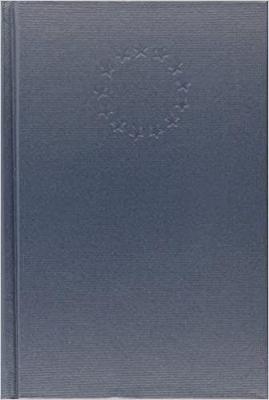Documentary History of the First Federal Congress of the United States of America, March 4, 1789-March 3
1 primary work
Book 1791
With the publication of volumes 21 and 22, Johns Hopkins University Press completes the Documentary History of the First Federal Congress, 1789-1791, a comprehensive edition that presents the official records (volumes 1-8) and the unofficially reported debates (volumes 9-14) of this essential congress, as well as eight volumes of correspondence. These letters and other documents bring the official record to life, illustrating the often informal political negotiations of a young nation's earliest leaders and revealing the world they lived in. Volume 21 begins with a section describing the move to Philadelphia's Congress Hall. Third Session correspondence, arranged chronologically from November 1790 to March 1791, when Congress officially concluded its business, follows. Several key and potentially divisive issues-including a national bank, a tax on domestically produced spirits, and the final location of the permanent seat of the federal government-occupied the time and attention of Congress during this short session.
In addition, reports of a successful attack on US troops by Native Americans in the Northwest Territory were the impetus for moves to increase the size of the military while continuing to negotiate with the Indian nations. Volume 22 is unique among the correspondence volumes in that it is topical. It begins with a section of firsthand accounts about Congress that were written after it adjourned, some as late as the 1840s. This is followed by sections of documents relating to the 1790 Treaty of New York with the Creek Nation and its aftermath, as well as the experience of FFC incumbents during the second federal election. The final section includes letters and other documents dated 1789 to 1791 that the editors discovered after the publication of the volume in which they would have otherwise appeared. The documents gathered here include selections from a book of poems by Representatives Thomas Tudor Tucker and John Page, and Page's wife, Margaret Lowther, as well as listings from the New York Society Library's ledger that recorded book loans to members in 1789 and 1790, when Congress met in New York City's Federal Hall.
The final volume concludes with an extensive editorial apparatus, including the biographical gazetteer and index for the two-volume set. This extensive index continues the editors' policy of indexing all concepts to provide intellectual access.
In addition, reports of a successful attack on US troops by Native Americans in the Northwest Territory were the impetus for moves to increase the size of the military while continuing to negotiate with the Indian nations. Volume 22 is unique among the correspondence volumes in that it is topical. It begins with a section of firsthand accounts about Congress that were written after it adjourned, some as late as the 1840s. This is followed by sections of documents relating to the 1790 Treaty of New York with the Creek Nation and its aftermath, as well as the experience of FFC incumbents during the second federal election. The final section includes letters and other documents dated 1789 to 1791 that the editors discovered after the publication of the volume in which they would have otherwise appeared. The documents gathered here include selections from a book of poems by Representatives Thomas Tudor Tucker and John Page, and Page's wife, Margaret Lowther, as well as listings from the New York Society Library's ledger that recorded book loans to members in 1789 and 1790, when Congress met in New York City's Federal Hall.
The final volume concludes with an extensive editorial apparatus, including the biographical gazetteer and index for the two-volume set. This extensive index continues the editors' policy of indexing all concepts to provide intellectual access.
